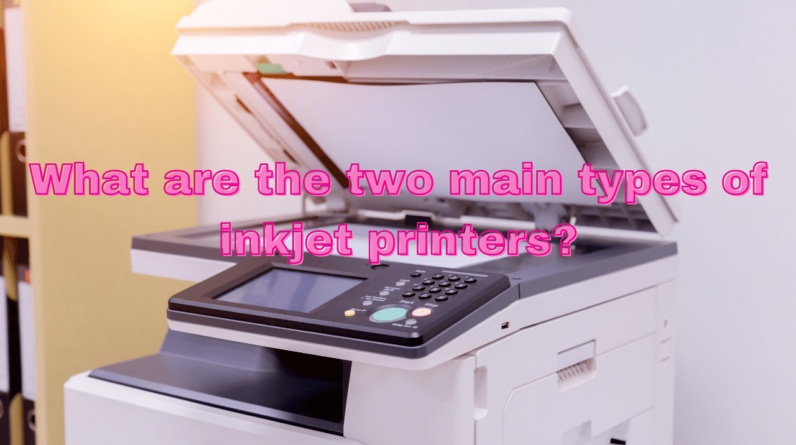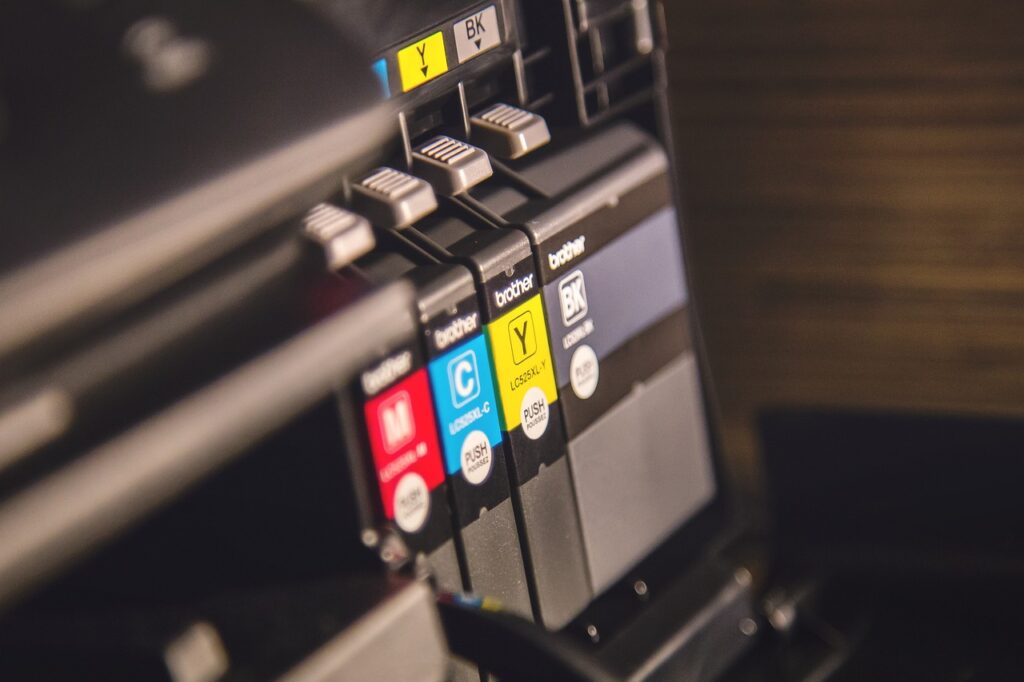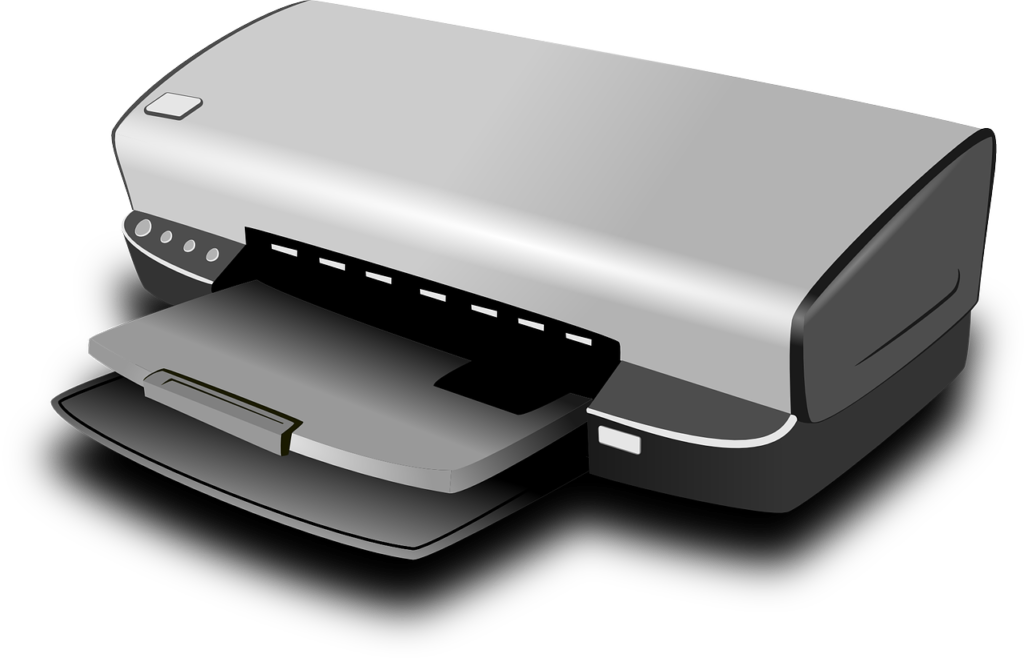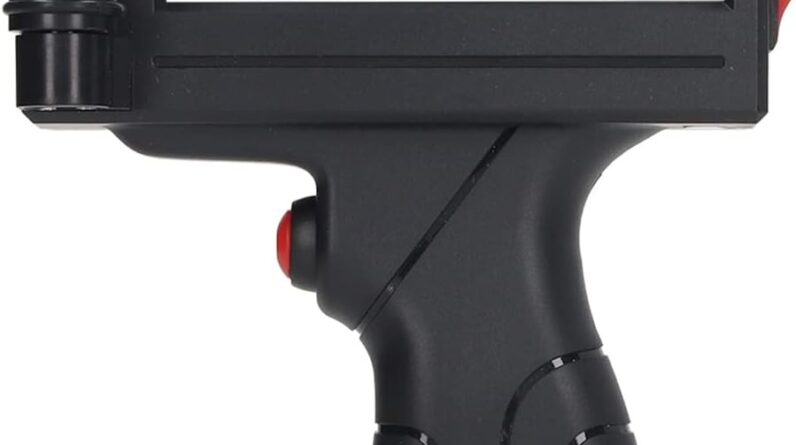
Disclaimer: This post may contain affiliate links. As an Amazon Associate, we earn from qualifying purchases.
If you’ve ever wondered about the different types of inkjet printers out there, look no further! In this article, we’ll explore and unpack the two main types of inkjet printers, giving you a better understanding of their features and benefits. By the end, you’ll be equipped with the knowledge to make an informed decision when it comes to choosing the right inkjet printer for your needs. So let’s jump right in and discover the exciting world of inkjet printing!

This image is property of pixabay.com.
Thermal Inkjet Printers
How Thermal Inkjet Printers Work
Thermal inkjet printers, also known as bubble jet printers, are one of the two main types of inkjet printers available in the market. These printers use small thermal energy pulses to create ink droplets that are propelled onto the paper. The printer works by heating the ink in a tiny chamber using a heating element, which causes the ink to rapidly vaporize and form a bubble. The expansion of the bubble forces the ink droplet onto the paper, creating the desired image or text.
Advantages of Thermal Inkjet Printers
One of the main advantages of thermal inkjet printers is their affordability. These printers typically have a lower upfront cost compared to other types of printers, making them a popular choice for home users and small businesses. Additionally, thermal inkjet printers are known for their high-quality prints. They can produce sharp and vibrant images with a high level of detail, making them suitable for a wide range of print needs, including photos and documents.
Another advantage of thermal inkjet printers is their compact size. These printers are designed to be compact and lightweight, making them easy to fit in small spaces. They are also user-friendly, with simple installation and operation processes. Thermal inkjet printers are compatible with a wide range of paper types and sizes, allowing users to print on various media without any issues.
Disadvantages of Thermal Inkjet Printers
While thermal inkjet printers have many advantages, they also have some disadvantages that may impact certain users. One of the main disadvantages is the cost of replacement ink cartridges. The ink cartridges for thermal inkjet printers tend to be relatively expensive, which can increase the overall cost of printing in the long run, especially for users who print frequently or in large volumes.
Another potential drawback of thermal inkjet printers is their print speed. While the print quality is high, these printers are generally slower compared to other types of printers. This may not be a significant issue for users who only print occasional documents, but it can be a drawback for those who require faster printing speeds for their day-to-day operations.
Common Applications of Thermal Inkjet Printers
Thermal inkjet printers are widely used in various applications, both personal and professional. In the personal realm, these printers are commonly used for printing photos due to their ability to produce high-quality, detailed prints. They are also suitable for printing documents and other types of graphics.
In professional environments, thermal inkjet printers find applications in industries such as marketing, advertising, and graphic design. They are ideal for printing brochures, posters, labels, and other promotional materials. The high-quality prints produced by thermal inkjet printers make them a valuable tool for businesses that require visually appealing and professional-looking prints.
Piezoelectric Inkjet Printers
How Piezoelectric Inkjet Printers Work
The second main type of inkjet printers is piezoelectric inkjet printers. Instead of using thermal energy, these printers use an electric current to generate pressure waves in the ink chambers. This pressure causes the ink droplets to be expelled onto the paper. Piezoelectric inkjet printers utilize piezoelectric crystals that change shape when an electric current is applied to them. This change in shape generates the necessary pressure to dispense the ink droplets.
Advantages of Piezoelectric Inkjet Printers
Piezoelectric inkjet printers offer several advantages that make them a preferred choice for certain users. One of the main advantages is their versatility when it comes to ink compatibility. These printers can accommodate a wider range of inks, including specialized inks such as UV-curable inks and solvent-based inks. This versatility makes piezoelectric inkjet printers suitable for applications that require specific ink properties, such as outdoor signage or industrial printing.
Another advantage of piezoelectric inkjet printers is their superior print longevity. The prints produced by these printers are known for their excellent durability, as they are resistant to fading and smudging. This makes them suitable for applications that require long-lasting prints, such as archival photography or documents that need to withstand harsh environmental conditions.
Disadvantages of Piezoelectric Inkjet Printers
Despite their advantages, piezoelectric inkjet printers also have some disadvantages to consider. One of the main drawbacks is their higher initial cost compared to thermal inkjet printers. Piezoelectric inkjet printers tend to be more expensive upfront, making them less accessible for budget-conscious users or small businesses.
Another disadvantage is the potential for clogging. Due to the smaller size of the ink droplets produced by piezoelectric inkjet printers, there is a higher risk of clogged printheads if the printer is not used regularly or if low-quality inks are used. Regular maintenance and periodic printhead cleaning are necessary to maintain optimal performance.
Common Applications of Piezoelectric Inkjet Printers
Piezoelectric inkjet printers are commonly used in a variety of applications that require specific ink properties or durability. These printers are often found in the production of outdoor signage, where the prints need to withstand exposure to sunlight, harsh weather conditions, and other environmental factors. They are also widely used in industrial printing, such as printing on packaging materials, textiles, or ceramics.
In the field of fine art and photography, piezoelectric inkjet printers are popular due to their ability to produce prints with a wide color gamut and exceptional detail. These printers are capable of reproducing delicate shades and subtle tonal variations, making them ideal for artists and photographers who want to showcase their work with exceptional print quality.
Comparison Between Thermal and Piezoelectric Inkjet Printers
Printing Technology
The main difference between thermal and piezoelectric inkjet printers lies in the printing technology they employ. Thermal inkjet printers use heat to create ink droplets, while piezoelectric inkjet printers use electric currents to generate pressure waves in the ink chambers. This difference in technology leads to variations in print quality, speed, and overall performance.
Print Quality
When it comes to print quality, both thermal and piezoelectric inkjet printers can produce high-quality prints, but there are differences in their capabilities. Thermal inkjet printers excel in producing sharp and vibrant prints with accurate color reproduction. They are particularly well-suited for printing photos and documents with intricate details. On the other hand, piezoelectric inkjet printers offer a wider color gamut and better tonal gradation, making them ideal for applications that require superior color accuracy and smooth transitions.
Speed
In terms of printing speed, thermal inkjet printers generally have an advantage over piezoelectric inkjet printers. The rapid heating and vaporization of the ink in thermal inkjet printers enable faster printing speeds, making them more suitable for high-volume printing tasks or time-sensitive projects. Piezoelectric inkjet printers, however, have improved their speed capabilities in recent years and can provide acceptable printing speeds for most applications.
Cost
The cost considerations for thermal and piezoelectric inkjet printers go beyond the upfront price tag. While thermal inkjet printers have a lower initial cost, the long-term cost of replacement ink cartridges can add up, especially for users who print frequently or in large volumes. In contrast, piezoelectric inkjet printers may have a higher upfront cost, but they often have lower ink cartridge costs, making them a more cost-effective choice in the long run for users with high print volumes.
Maintenance
Both thermal and piezoelectric inkjet printers require regular maintenance to ensure optimal performance. Thermal inkjet printers may require more frequent printhead cleaning to avoid clogging, especially when using low-quality inks or when the printer is not used regularly. Piezoelectric inkjet printers, while generally less prone to clogging, still require regular printhead maintenance and cleaning to maintain print quality and prevent potential issues.
Thermal Inkjet Printer Manufacturers
HP (Hewlett-Packard)
HP is one of the leading manufacturers of thermal inkjet printers. The company offers a wide range of printers suitable for different needs, from home use to heavy-duty office printing. HP inkjet printers are known for their reliable performance, high-quality prints, and user-friendly features. They offer a variety of models with different printing speeds, functionalities, and price ranges, ensuring there is an option for every user.
Canon
Canon is another well-known brand in the thermal inkjet printer market. Canon printers are synonymous with exceptional print quality and reliability. They offer a range of models designed for different user requirements, from compact photo printers to large-format printers for professional applications. Canon inkjet printers are often favored by photographers and graphic designers for their ability to produce vivid and detailed prints.
Epson
Epson is a reputable manufacturer known for its wide range of inkjet printers. Epson printers are highly regarded for their exceptional print quality, durability, and advanced features. They offer printers for various purposes, including home printing, office use, and commercial applications. Epson’s inkjet printers are often popular among professionals in the creative industry due to their ability to produce vibrant prints with accurate color reproduction.
Brother
Brother is a trusted brand that offers reliable thermal inkjet printers suitable for both home and office use. Brother printers are known for their affordability, ease of use, and reliable performance. They offer a range of models with different functionalities, from basic printers for everyday printing needs to multifunction printers that combine printing, scanning, and copying capabilities. Brother inkjet printers are often praised for their user-friendly interface and cost-effective operation.
Lexmark
Lexmark is a respected name in the thermal inkjet printer market, offering printers that cater to diverse printing needs. Lexmark printers are known for their robust construction, high print speeds, and excellent print quality. They offer a variety of models, including compact printers for home use, all-in-one printers for small businesses, and high-volume printers for demanding office environments. Lexmark inkjet printers are often favored by businesses that require reliable and efficient printing solutions.

This image is property of pixabay.com.
Piezoelectric Inkjet Printer Manufacturers
Epson
Epson not only produces thermal inkjet printers but is also a major player in the piezoelectric inkjet printer market. Epson piezoelectric inkjet printers are known for their exceptional print quality, long print longevity, and versatile ink compatibility. Epson offers a wide range of models, including professional-grade printers for photo studios, large-format printers for graphic designers, and industrial printers for specialized applications.
Canon
Canon, like Epson, is not limited to thermal inkjet printers and also manufactures piezoelectric inkjet printers. Canon piezoelectric inkjet printers are renowned for their precise color reproduction, wide color gamut, and excellent print durability. Canon offers a range of models suitable for different printing needs, from compact printers for home use to high-speed printers for commercial applications.
Brother
Brother is another manufacturer that produces piezoelectric inkjet printers alongside thermal inkjet printers. Brother piezoelectric inkjet printers are designed to deliver sharp and vibrant prints with accurate details. They offer a range of models with different printing speeds and functionalities to cater to various user requirements. Brother inkjet printers are often chosen for their affordability, reliability, and user-friendly features.
Roland
Roland is a well-established brand in the piezoelectric inkjet printer market, specializing in wide-format printers. Roland printers offer excellent print quality, speed, and durability, making them popular among professionals in industries such as signage, graphics, and textile printing. Roland piezoelectric inkjet printers are known for their advanced features, precise color management, and outstanding production capabilities.
Mimaki
Mimaki is a leading manufacturer of piezoelectric inkjet printers, especially in the industrial printing sector. Mimaki printers are known for their versatility, offering a wide range of printing options for different applications. They excel in various fields, including textile printing, signage, packaging, and label printing. Mimaki piezoelectric inkjet printers are highly regarded for their exceptional print quality, durability, and advanced functionalities.
Factors to Consider When Choosing an Inkjet Printer
Printing Needs
Before selecting an inkjet printer, it is important to consider your specific printing needs. Determine whether you require a printer primarily for text documents, photo printing, or a combination of both. This will help you choose a printer that is optimized for the type of printing you do most often.
Print Volume
Consider the expected volume of printing you will be doing regularly. If you have high print volume requirements, a printer with a higher paper capacity or faster printing speeds may be more suitable. On the other hand, if you only print occasionally, a printer with basic features and lower print speeds may be sufficient.
Print Quality
Evaluate the desired print quality based on the type of documents or images you will be printing. If you prioritize high-resolution photo printing or detailed graphics, choose a printer that can deliver excellent print quality with vibrant colors and sharp details. Make sure to review sample prints or read reviews to assess the print quality of different models.
Cost of Ink Cartridges
Take into account the ongoing cost of ink cartridges, as it can significantly impact the cost-effectiveness of your printing. Compare the prices of replacement ink cartridges for different printer models and consider the expected yield of each cartridge. This will help you determine the overall cost of printing in the long run.
Printer Size and Compatibility
Consider the available space you have for a printer and choose a size that fits comfortably in your workspace. Additionally, check the compatibility of the printer with your computer or other devices. Ensure that the printer has the necessary connectivity options, such as USB or wireless, to seamlessly integrate with your existing setup.
Additional Features
Consider any additional features or functionalities that may be beneficial for your printing needs. For example, if you frequently print double-sided documents, look for a printer with duplex printing capability. If you need to scan or copy documents, consider an all-in-one printer that combines printing, scanning, and copying functionalities.

This image is property of pixabay.com.
Future Trends in Inkjet Printing Technology
High-Resolution Printing
The future of inkjet printing technology is likely to see advancements in high-resolution printing capabilities. Manufacturers are continually working to improve print resolution, allowing for more detailed and lifelike prints. This will be particularly exciting for industries such as photography, graphic design, and fine art, where print quality and color accuracy are paramount.
3D Printing
Inkjet technology has already made significant contributions to the field of 3D printing, and it is expected to continue evolving in this area. The ability to jet different materials layer by layer opens up new possibilities for creating intricate structures and prototypes. As 3D printing becomes more accessible and affordable, it is likely to revolutionize industries such as manufacturing, healthcare, and architecture.
Eco-Friendly Inks
The desire for more sustainable printing solutions is driving research and development in eco-friendly inks. Manufacturers are exploring alternative ink formulations that are less harmful to the environment, such as bio-based inks and soy-based inks. The future of inkjet printing is likely to see a wider adoption of these eco-friendly inks, helping reduce the environmental impact of printing.
Wireless Printing
As technology continues to advance, wireless printing is expected to become more prevalent. The convenience of printing wirelessly from various devices, such as smartphones or tablets, is highly desirable for both home and office users. Manufacturers will continue to integrate wireless connectivity options into their inkjet printers, making it easier than ever to print from any location within a network.
Improved Print Speed
Printing speed is an important factor for many users, and future advancements in inkjet printing technology will likely focus on improving print speeds. Manufacturers are constantly exploring ways to increase the efficiency of inkjet printing processes, resulting in faster print times. This will benefit users who require quick turnarounds or have high-volume printing needs.
As inkjet printing technology continues to evolve, users can expect exciting developments that will enhance print quality, speed, and functionality. The choice between thermal and piezoelectric inkjet printers will depend on individual requirements, preferences, and budget considerations. By considering various factors and staying updated on the latest trends, users can make informed decisions when choosing an inkjet printer that best suits their needs.






